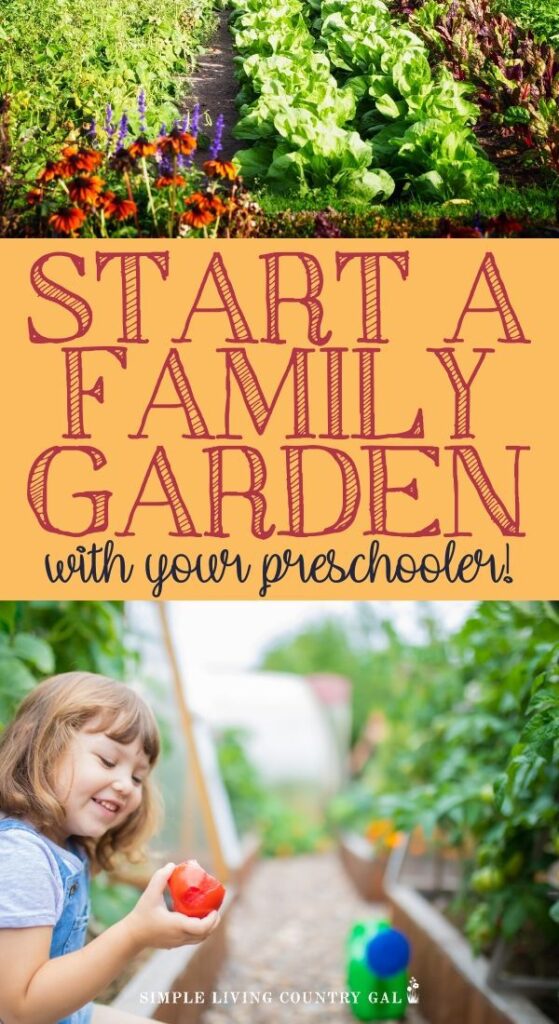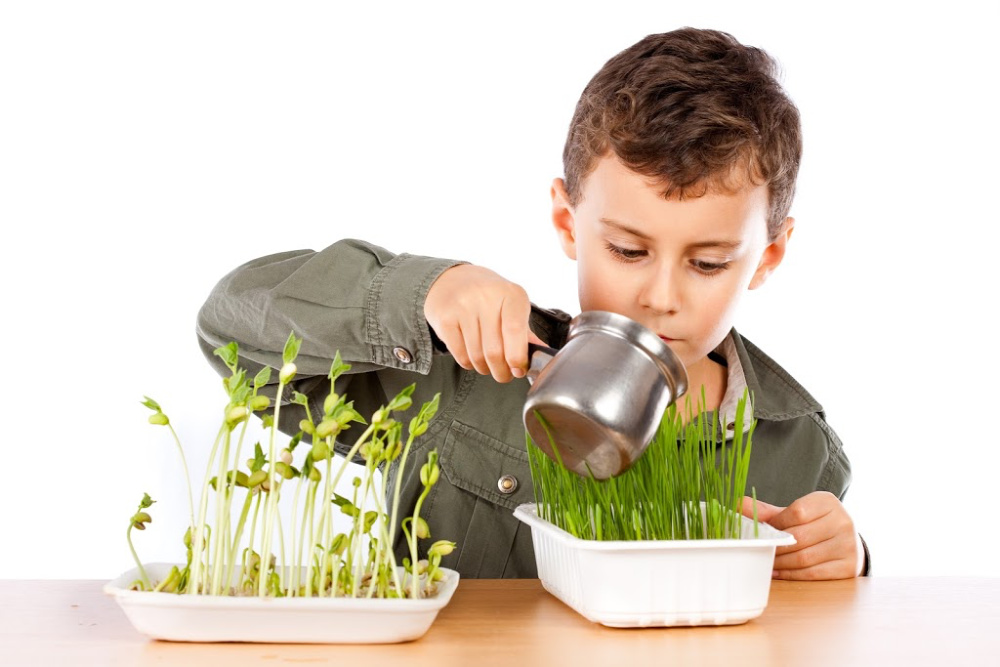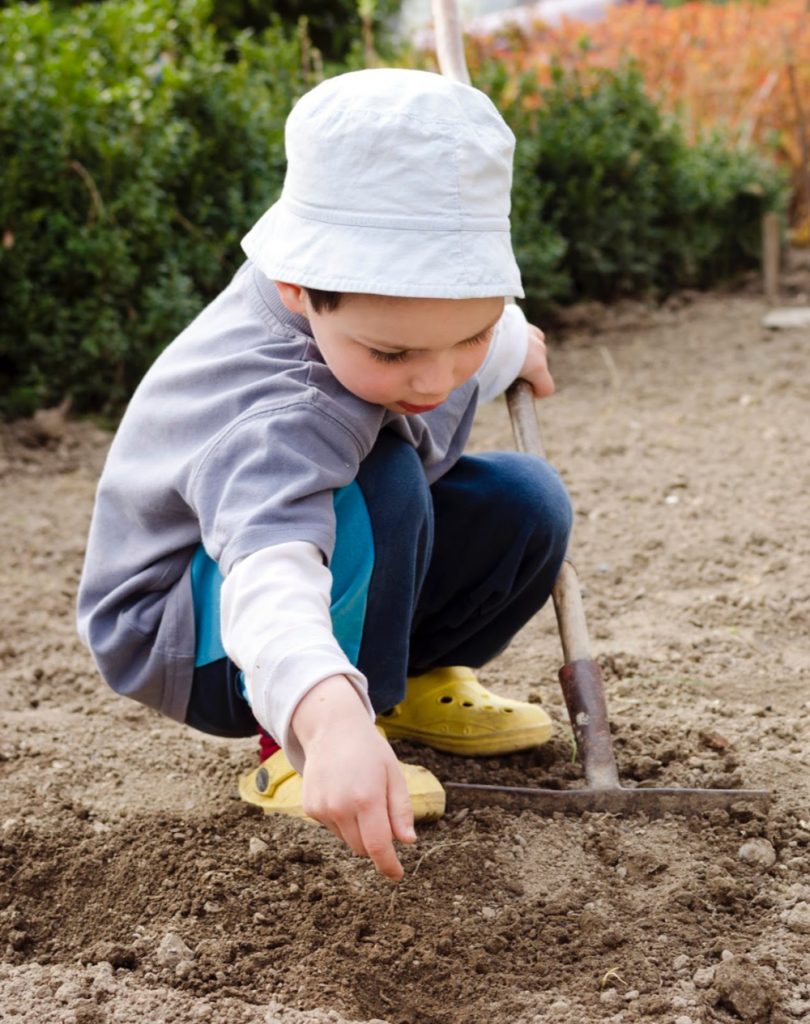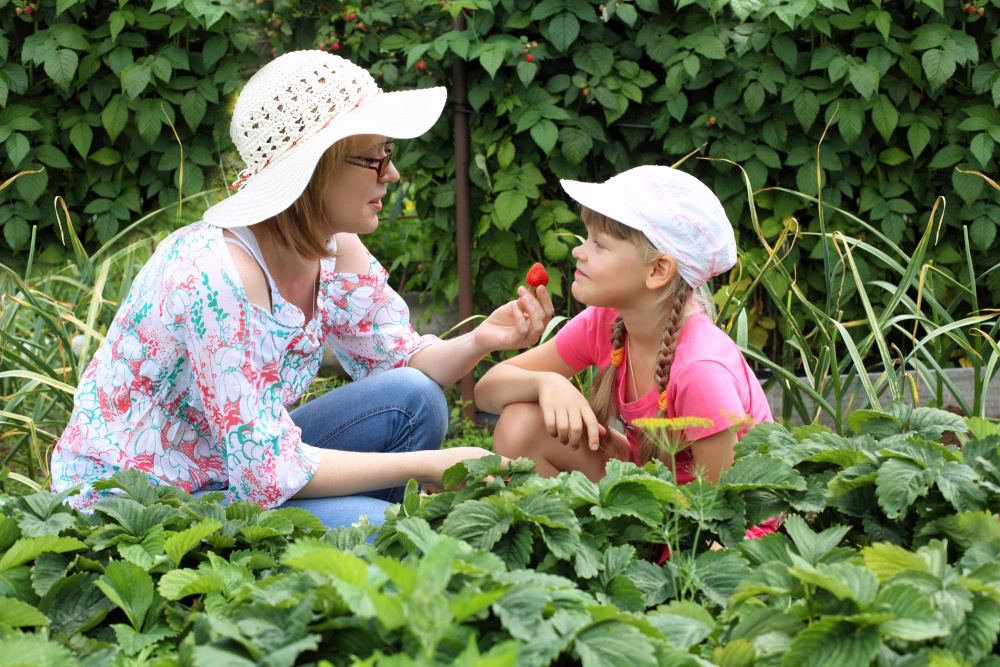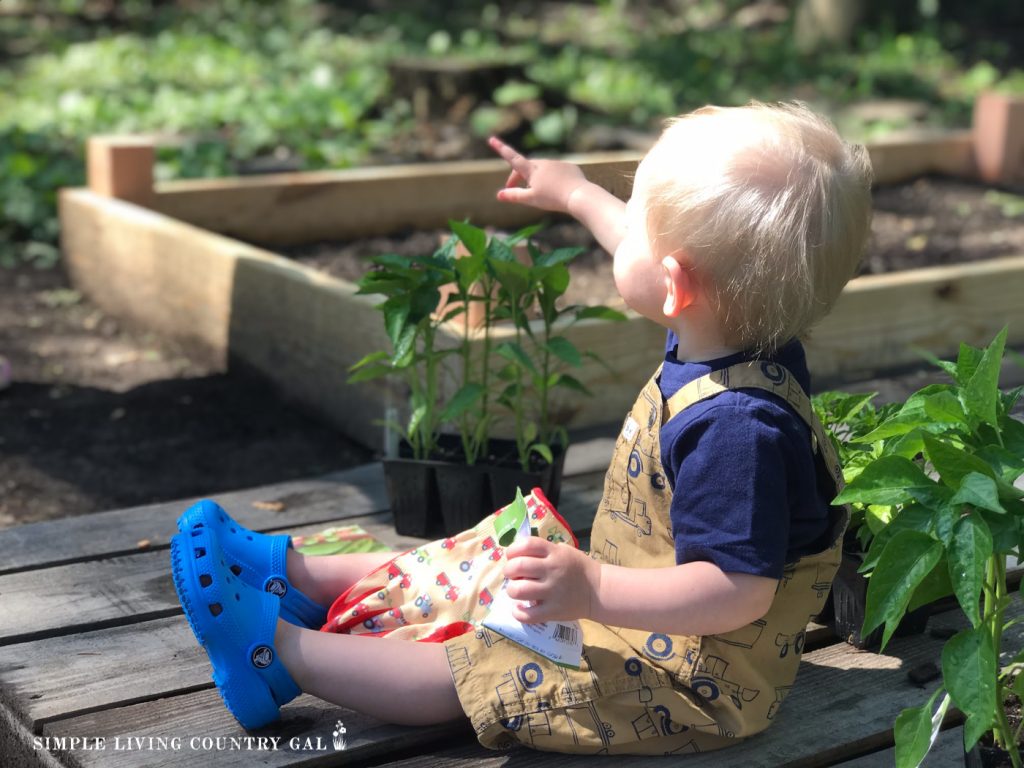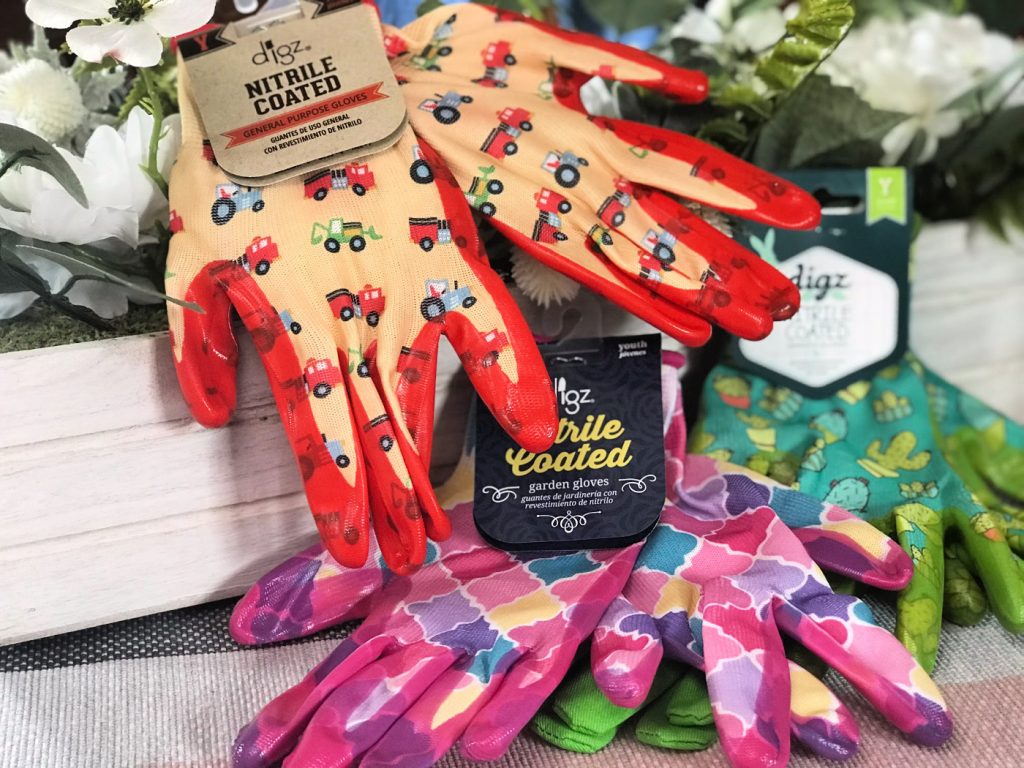Family Gardening Tips For Preschool Gardening
If you are looking for family Gardening Tips For Preschool Gardening you are in the right place. Sharing your love of gardening with your children and grandchildren and create a bond they will remember for a lifetime.
Children love to play in the dirt, even some adults enjoy the feel of the cool soil on their hands. And it is that common love that helps to bring together two generations in the garden. My own grandsons love to help with planting even at their young ages, and I love to see the excitement on their faces as they feel the soil and touch the plants and watch them grow and bloom. It is that excitement that is so special and gives us a unique opportunity to teach our kids at a young age the importance of growing their own food.
Preschool Gardening – Teaching Kids to Love to Garden
Preschoolers do not have long attention spans it’s true, but they can remember, and they do get excited. The key to educating young children is allowing them to take an active part in the process. And what better classroom can there be than outside in a vegetable garden.
Not all learning needs to be done in a classroom, actually, this is only one part of the learning process. Hands-on can be so exciting for young children and it will help them to really associate their care with how plants grow and flourish. The more you can involve their hands in learning the more excited your child or grandchild will be about anything you want to teach them. This includes cooking, building, arts, crafts, and yes planting, weeding, and harvesting.
Keeping things simple is important so you help their excitement grow as they learn new skills. It’s best to start early with children to help them get around and love to learn early on. Children (especially preschoolers) are hands-on and the more you can get their hands dirty the more excited they will be to learn. You can give them a wash tub with their own soil and a few hand tools that are age-appropriate and just allow them to fill and experiment with the dirt and seeds.
Actually, that is kind of the point of childhood. To get in there and experiences the feel and the smell. And for that reason, gardening is a perfect fit. Not only does it allow them to get their hands dirty, but it also teaches them how to plant the seeds, how much to water, and how to encourage those plants to grow throughout the entire season. They really get to witness the miracle of life and growth firsthand in a preschool garden.
A lesson that is more valuable than they may realize right now.
The Great Outdoors
Children, as a general rule, love to be outside. It never ceases to amaze me how two young boys can find endless adventures in a small dirt pile. Their curiosity is something every child is born with and a great resource to tap into when you are teaching them something new.
When home teaching, it is best to really lean into that wonder. Show them the different plants you can grow in your area. How to be gentle yet firm along with the different parts of the plants. Yes, even at a very young age they will show an understanding of the growing process if you take the time to explain it to them.
Allow them to touch, feel, and smell. Use all of their senses to really get them excited to plant those seedlings in the ground and watch them grow.
If you’re in a colder climate, you may have to move certain plants indoors at least when first starting out. You can start to grow a garden using some cups, soil, water, and light. Really extending the learning to almost year-round.
READ: THE BEST VEGETABLES TO GROW FOR A FIRST-TIME GARDENER
If you are in a warmer climate you can get outside a bit sooner and begin teaching the skills of turning the soil and preparing the ground for spring planting. Older children will enjoy the science behind pH levels and what you need to do to create the healthiest environment for different plants. You can even introduce them to backyard composting another skill that I am afraid is getting lost in the world today and one we really do need to pass down to our children and grandchildren.
How to Turn Preschool Gardening Into a Life-Long Lesson
Commonly, preschool, kindergarten, or first-grade gardening education usually involves placing a bean in a wet paper towel and then transplanting it into a small cup with soil to sprout. This is a great way to introduce gardening to youngsters in a classroom but today at home we can really take this to a more exciting level.
Allowing children to get their hands in the ground and watch something grow from seed to harvest is a wonderful and exciting way to pass on a love for growing your own food.
It’s true that most young ones may not get overly excited over eating their vegetables, but if they can pull the carrot from the ground, it may just make a world of difference. Also, what child between the ages of three and five do you know that doesn’t like to play in the dirt? Even little girls have fun in the mud and it’s that fun you can use to turn them into lifelong gardeners.
And when it comes to water–that’s a perfect fit for toddlers. Not only will they love the very act of digging in the dirt, planting the seed, and watering, they’ll begin to associate the fun of gardening with learning. There are so many things I wish my grandparents had taught me, things that I can no longer ask them about. Give your family the gift of your knowledge and help to raise an amazing generation of gardeners.
Instilling Healthy Habits Early On
In addition to helping your preschooler learn, you will also help them eat healthier foods without too much fuss. It’s a win-win for any parent or grandparent that has struggled with dinner time battles. Children love to play pretend; when they can bring their imagined food prep to life, that’s a big deal for them.
When preschool gardening, it is best to plant a variety of vegetables and fruits to encourage your little ones to experiment by tasting new things. Just knowing they played a hand in growing the goodies on their plate really does make a difference at dinner time. Not to mention instilling great eating habits early on and encouraging a healthier lifestyle as they grow.
From there, you make it a part of your daily routine together. Watering and weeding is something that happens often during the summer and a great project to do along with your little ones.
Having a Little Fun as You Wait
While you can certainly allow the plants to do their thing throughout the growing season, it might be better to have regular small harvests and make a celebration around it. For the girls, you can have a garden party, put on some fun music, dress up and decorate a small table with flowers and fresh garden picks. For the boys, you can do a backyard garden picnic. Lay out a blanket, have some fun garden snacks, go barefoot in the grass and just enjoy being together.
By adding a bit of fun to each stage of the garden’s growth, you will help your child to see why it’s so important to grow their own food and how to care for each plant so it can be at its healthiest. This can be done in a way that is not only educational but fun as well for both you and them.
It’s true with the youngest children, you’ll ultimately do much of the work yourself; but the more you can include your preschooler in the entire process the better it will be for them and you as well. A bond that centers around your love of gardening are something you both can enjoy for years to come.
A few preschool gardening topics to share.
- Mulch – show your children how to mulch plants to help keep the weeds from taking over.
- Weeds – explain how much harm they can do and how to tell the difference between a bad weed and a good plant.
- Water – show the best times to water and how to do it so you keep your plants from drowning in too much.
- Sunshine – tell them the most important part of gardening is the sun and the way it helps the plants really flourish.
- Pest – finally, talk to them about the different animals that can eat your garden before you can and what you can do to protect your plants.
Fun And Learning In The Natural World
Remember that young ones tend to have a very short attention span, and they need to be hands-on as much as possible. And it’s true with hands-on comes messiness, but nothing a quick rinse with an outside hose can’t fix. Very young children will do well with a plastic washtub of soil and a few cups to put dirt into. Older children would love to have a child-sized wheelbarrow and a harvest basket all their own.
You can use child-sized gardening gloves. These gloves by Digz, are my favorites glove and they come in just about every size making it easy to find a pair that fits your child or grandchild perfectly! They have a non-slip surface that helps them stay on your little one’s hand keeping lost gloves a thing of the past.
My grandkids love to wear these gloves because they feel just like Gigi when they work in the garden with me. They also have adult-sized gloves as well that are perfect for any gardening chore. I love the different designs and how they fit my hands comfortably and snugly. These gloves really help make my gardening projects easier to do.
You can even find a child’s sized gardening apron to help keep things a bit neater but to also show your preschooler that this is not just a game but a project as well. Add that to a new supply of kid-friendly gardening tools and you will help them to get even more excited. There is just something about a gardening outfit and supply of tools that really get the young ones excited to try something out.
Make a list of things you know that grow well in your area along with when to start those seeds both indoors and then again plant them into the ground. Add to that a list of fruits and vegetables you know your preschooler will love to grow and then eat. By creating a simple garden plan, you can share it with your preschooler and create a love and a bond over growing food in the ground. Children of all ages love strawberries and a small patch in your own backyard is a great way to bond with your children every spring.
Follow these steps and you’ll be able to have snack time using vegetables and fruit from your own garden that your entire family can enjoy.
There truly is nothing better than fresh delicious food picked straight from a garden. With these tips, you can start your own preschool gardening project with your child or grandchild today.

